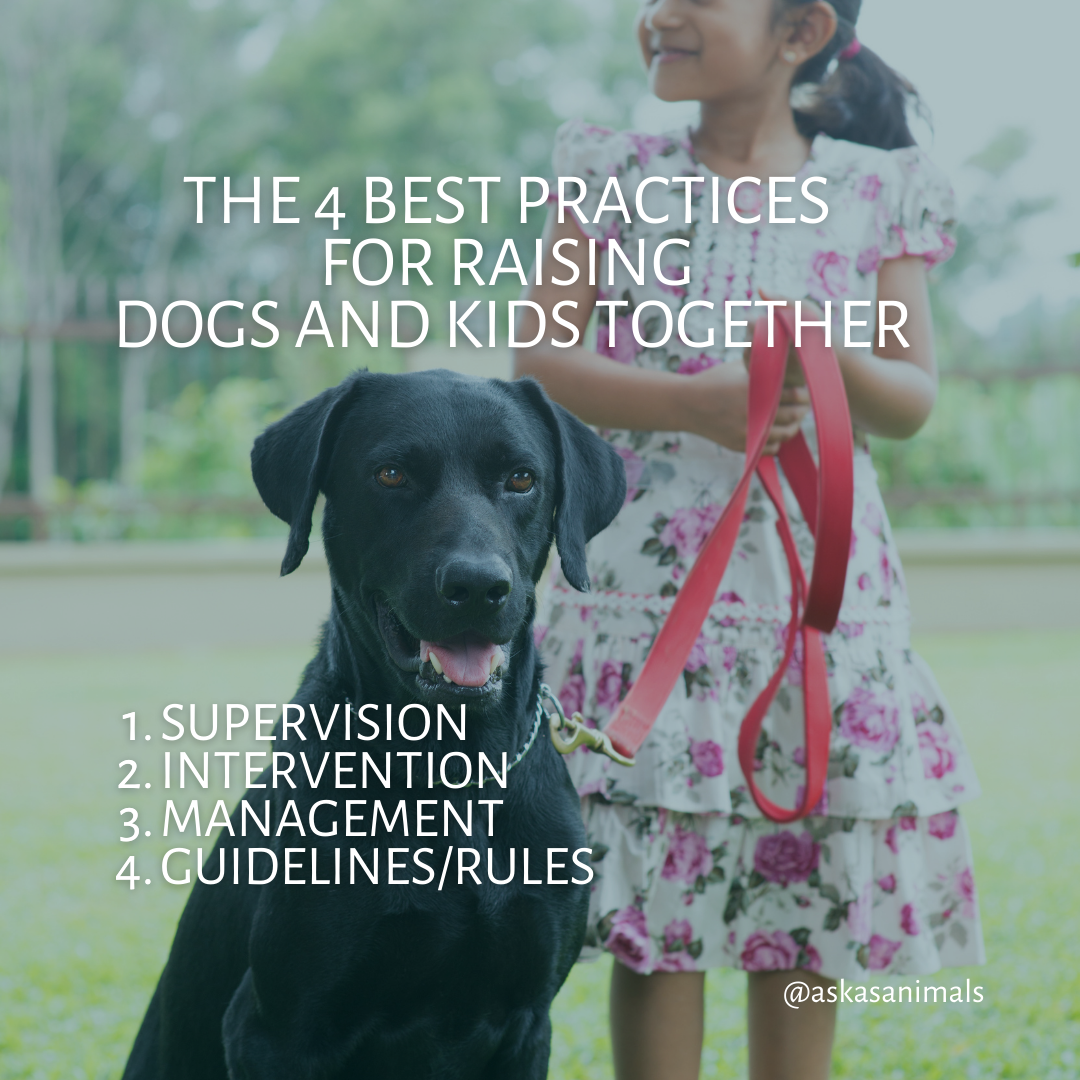Raising Dogs and Kids Together
4 Best Practices: Supervision, Intervention, Management and Guidelines

Dogs and kids can be a great combination, but it takes parental awareness, a certain dog personality and lots of supervision to run a safe and happy household. Many dogs don’t instinctually love kids. In fact, many dogs find kids unpredictable and annoying. This is why most dog bites victims are children bitten by their own dog or a dog they know. Here are 4 best practices to protect both your child and your dog.
These 4 best practices are meant for dogs and children currently living together and for dogs with no bite history.
1. Supervision: Be sure all dog and kid interactions are supervised. A parent should be available to step in and give the dog or the child a break when needed. If the dog is constantly pestered or made to feel uncomfortable (sat on, hugged, pinched or pulled), they’ll develop a negative association with children which increases risk of poor behavior in the future. Unsupervised children are most at risk for severe dog bites.
2. Intervention: Know your dog’s stress signs. Stress signs are subtle behaviors dogs use to communicate. Dogs have a spectrum of discomfort and stress signs to communicate with you when they aren’t feeling great about something that’s about to happen or is already happening. Some stress signs include sniffing the ground, licking their lips, yawning, turning away, showing a lot of white in the eye, shaking off, and freezing. Many of these are ‘normal’ behaviors for a relaxed and happy dog, but when seen out of context, these behaviors indicate anxiety. For example, a dog licking their lips after a tasty treat wouldn’t indicate nervousness, but a dog licking their lips at the sight of a stroller is concerning. Your job, as their advocate, is to ease the dog’s nerves by intervening and removing them from the stress-inducing situation. Remember that growling is a common precursor to snarling which is a common precursor to biting.
3. Management: Baby gates, crates and exercise pens are great tools to separate dogs and kids. If a kid is playing with a dog, make sure the dog always has an escape route. Dogs need a safe, kid-free area for quiet time. Just like parents need breaks, dogs need breaks.
4. Guidelines: Teach your child what is appropriate. Hugging, squeezing, riding on, sitting on, pinching and pulling are never appropriate ways for children to interact with dogs. This behavior creates stress and if your dog has no escape route, they’ll communicate how they feel through growling, snarling, biting or scratching. Keep in mind that crates should always be off limits to kids! In her book Living with Kids and Dogs, Colleen Pelar offers alternative ways for kids and dogs to bond such as going for walks, baking dog treats and reading stories together.
Adults need to protect both the canine and human members of the family. It can be tough to reach a balance, especially when kids are too young to understand the guidelines. Colleen Pelar’s book, Living With Kids and Dogs, is a great resource. It offers expectation for kids based on their age and how best they can interact with their pets. Don’t forget that as kids grow and mature, the guidelines will change!
Questions? Check out our virtual and in-person Behavior Workshops as well as the Resources page of our website!



